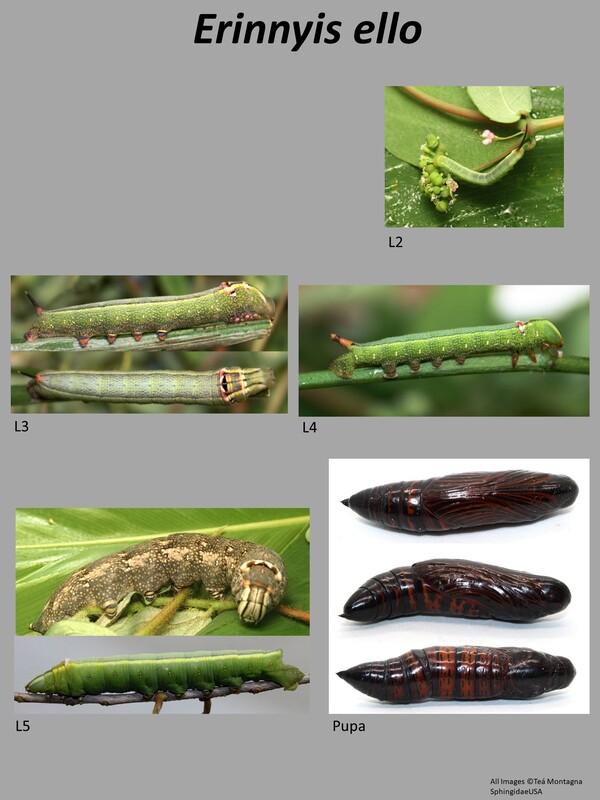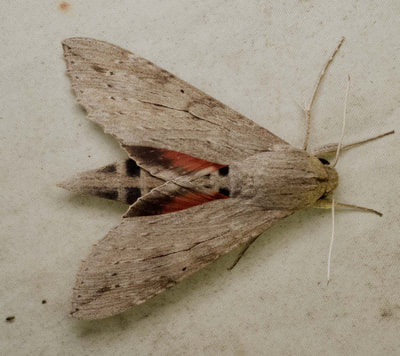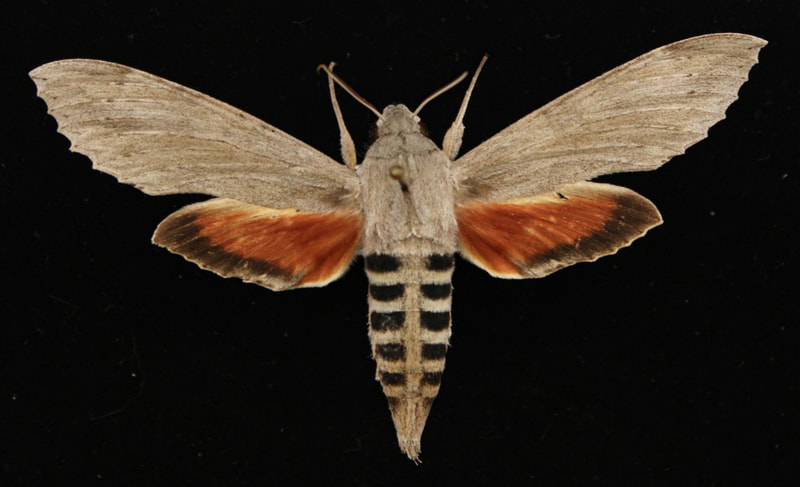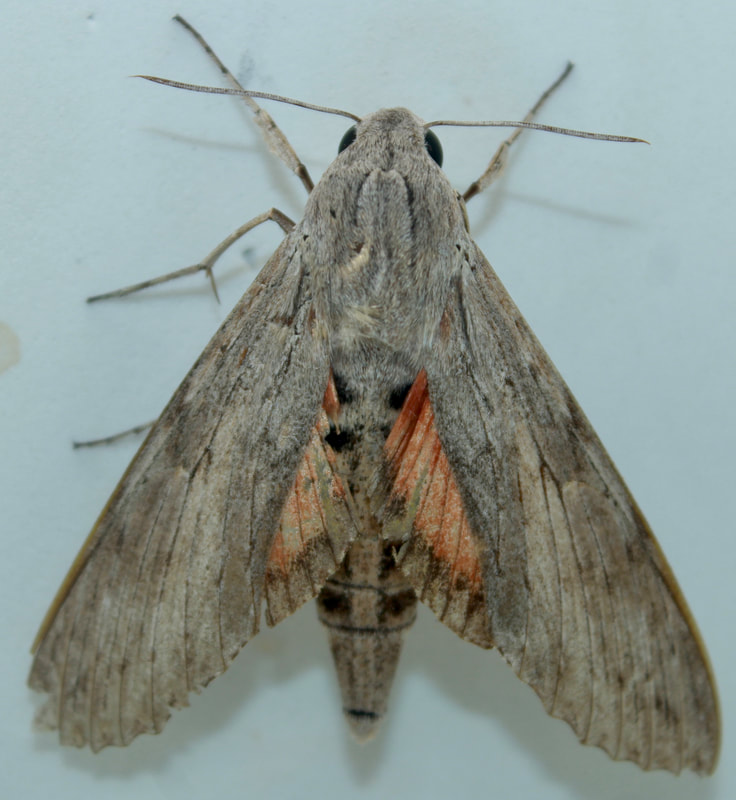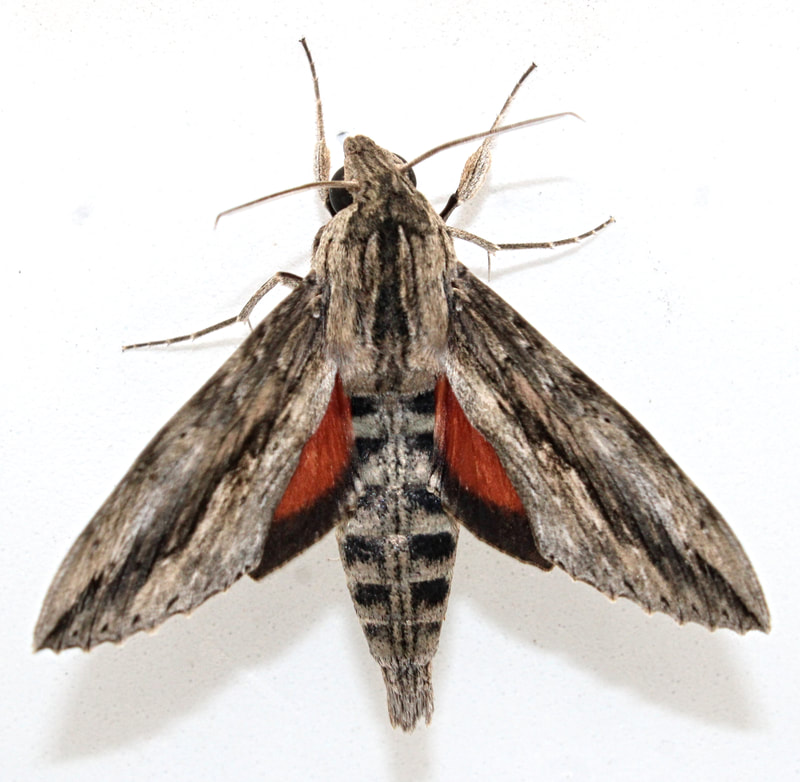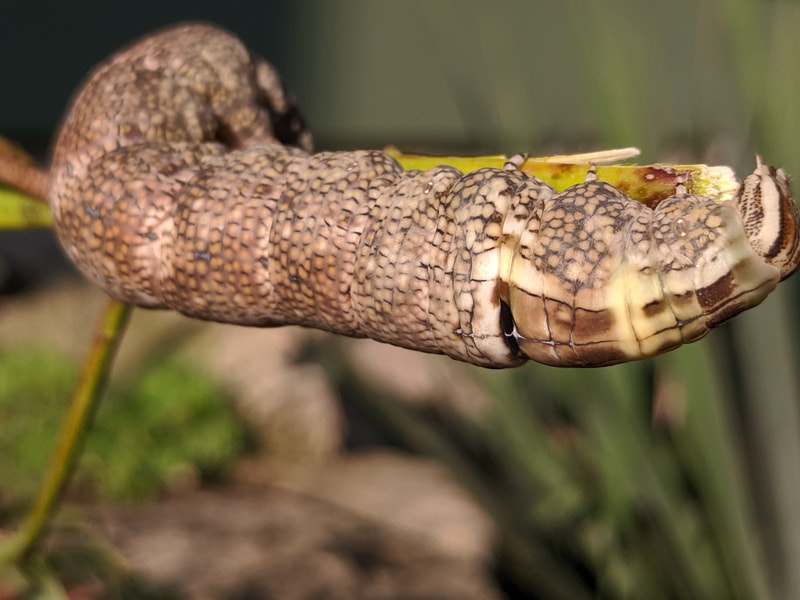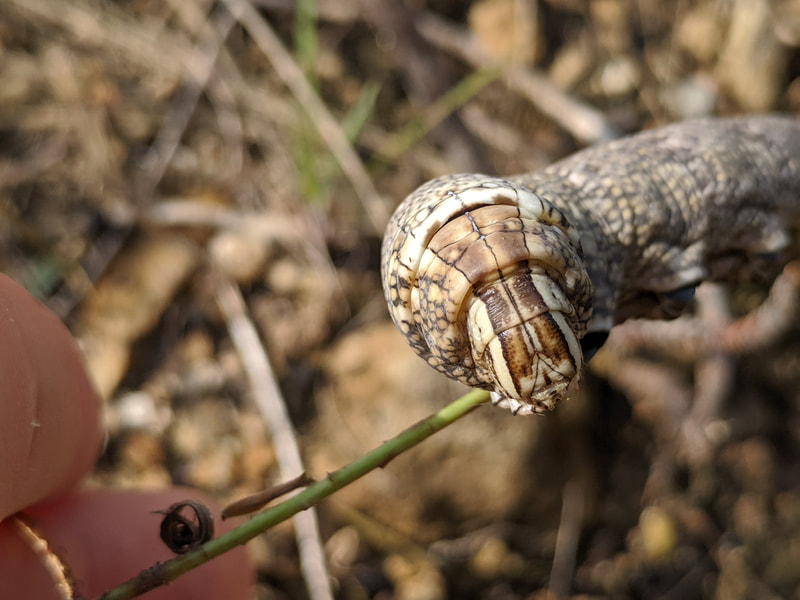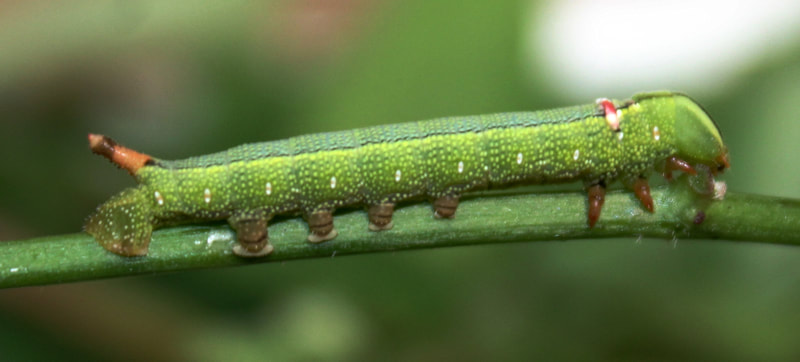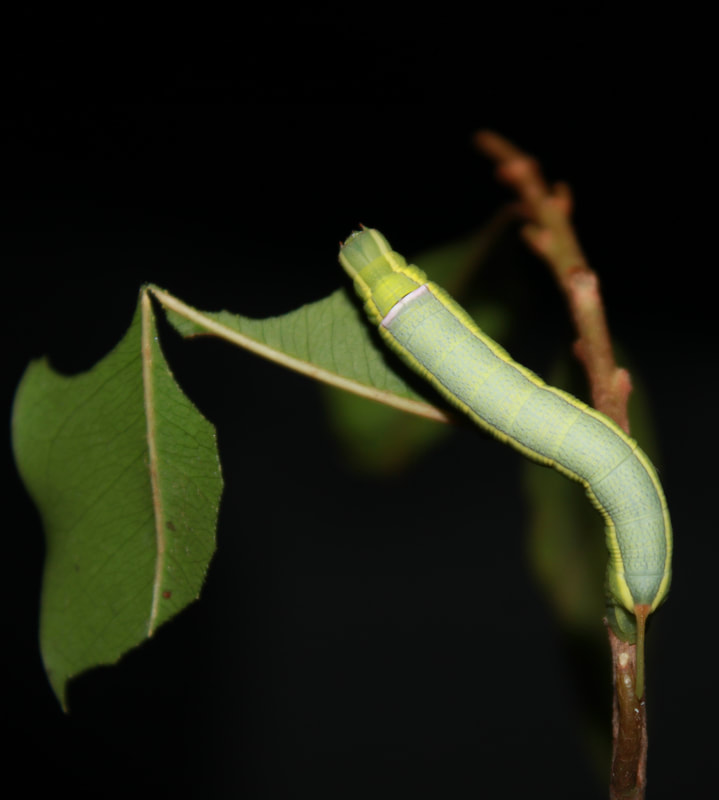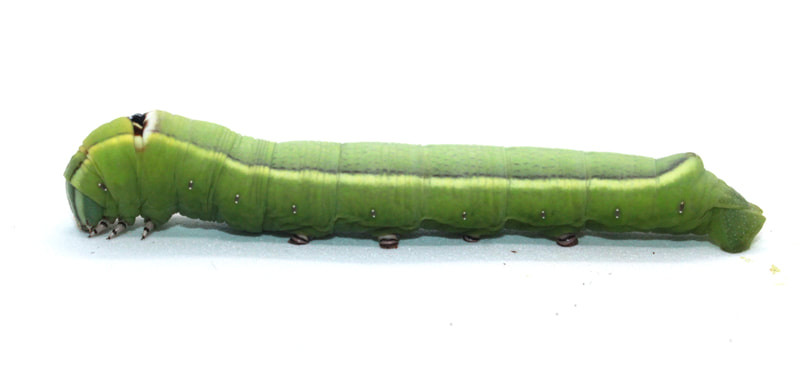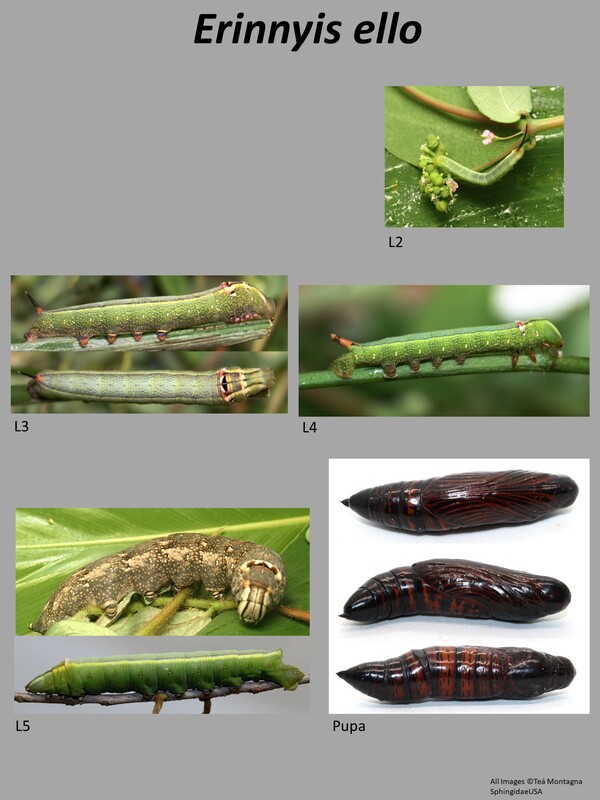|
Common Name(s): Ello Sphinx
Ecology and Life History: This moth is active year round in South Florida, and throughout the warmer months elsewhere. Both sexes of this moth are highly attracted to light, and can also be seen nectaring at flowers during dusk hours. It is unlikely that bait will be an attractant for this species. This moth is sexually dimorphic. Males are generally gray-brown with a thick black streak through the wing. The females are slate gray and drab looking. There is no notable size difference between the sexes. Eggs are laid on the surfaces of the leaf. Younger larvae feed singly on the undersides of leaves. The final instar larvae also feed singly, but can be found virtually anywhere on the plant. They feed on the sides of the leaf, usually consuming the entire leaf before moving on.Research has shown that the color of the final instar larva indicates its resting area. The brown form larvae are more likely to be on the bark of trees resting, whereas green larvae are camouflaged in the leaves. Habitat and Searching for Larvae: This is a fairly polyphagous moth, and therefore larvae can be found on a multitude of shrubs, trees, and herbaceous plants. This species can be found feeding on weedy plants in the understory of a forest or field, in shrubs, or up in the canopy of trees. There is virtually no way to predict where you will encounter this larva. This moth is found in a wide variety of habitats from fields, wetlands, hammocks, to hardwood forests. They are surprisingly tolerant of urban and suburban areas as well. The larva can be found year-round in South Florida, and during the growing season elsewhere. It has been known to disperse long distances outside it’s usual range and ovipositing. The green form larva glows quite well under UV light, and the brown form is noticeable, though it lacks the same fluorescence. Rearing Notes: Obtaining eggs from this species has yielded poor results. Adults placed in a paper bag did not lay. Nor did females placed in a large flight cage, fed daily, and provided with fresh hostplant material. I assume this species needs ample space, light, and high temperatures to ensure oviposition. This is an incredibly polyphagous moth, though larvae do not seem to like to switch hostplants. This species is not very susceptible to disease in captivity. Multiple larvae can be reared together with no issue as long as sufficient hostplant material is provided. They can handle low to moderate humidity. In higher humidity, larvae are slow growing and may eventually die if not properly vented. Sleeving is a great method for rearing this species and can be done so effectively. Pupation is achieved using the paper towel method outlined in the general information tab of this website. Soil is also a good choice. Host plants: Click here to load this Caspio Cloud Database
Cloud Database by Caspio |
Adult description:
This is a medium sized moth with forewings 38-44mm in length (2). This species is sexually dimorphic. Females are slightly large and plain gray whereas the males are slightly smaller and the gray is broken by a brown streak that starts about halfway through the forewing. The hindwings are bright red with a black border on the bottom that does not touch the anal angle of the hindwing. There is a small bluish tint on the area closest to the anal angle where the black ends. The males have a gray thorax with a black line in the middle. The females lack this black line. The abdomen of both sexes is striped black and gray. Larval description: L5: The larva is generally green, but can also be brown and lacks a distinct horn. There is a small nub of horn remaining. The dorsal part of the larva is greenish blue in the green form with two white lines running down the length of the larva separating the two colors. In the brown form, the larva isn’t bicolored, but there are still two lines running down the length of the larva as in the green form but the lines are black. There is a very distinctive and colorful fake eyespot on the first few thoracic segments that is revealed when the larva feels threatened. The prolegs and thoracic legs of this larva are pink. |
The gallery to the left contains photos of Erinnyis ello adults. If you have a photo that you would like to submit to us, please contact us.
The gallery to the right contains photos of Erinnyis ello larval and pupal stages. If you have a photo that you would like to submit to us, please contact us.
The gallery to the right contains photos of Erinnyis ello larval and pupal stages. If you have a photo that you would like to submit to us, please contact us.
|
|

